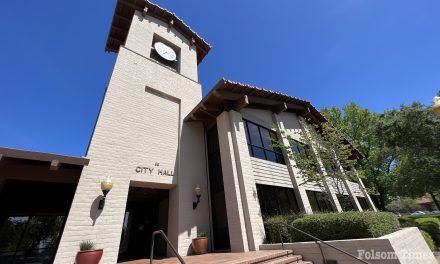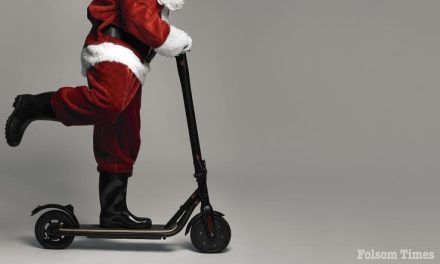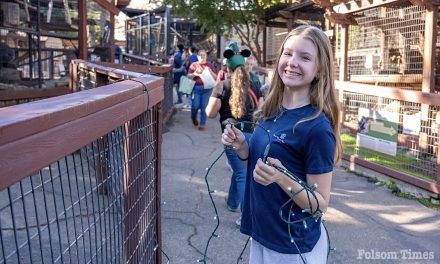One of Folsom’s most beloved neighborhood landmarks now has the name residents have used for nearly three decades. Last week, the Folsom City Council unanimously approved renaming Folsom Kids Play Park as Castle Park, formally adopting the community’s longtime nickname and setting the stage for a full reconstruction of the aging wooden playground in early 2026.
Located at 201 Prewett Drive beside Oak Chan Elementary School, the 2.1-acre park was originally built in 1996 through a major volunteer effort organized by a group known as Folsom Kids Play. The whimsical, multi-turret wooden fort quickly became known simply as Castle Park, a name that endured as each new generation of families discovered it.
Although the official title remained Folsom Kids Play Park, the nickname became so universal that when the city began the redesign process this year, staff asked residents whether it was time to make Castle Park the park’s formal name. Community workshops held in June and July overwhelmingly supported the change. When the Parks and Recreation Commission reviewed the issue on October 7, commissioners unanimously recommended the simpler and more familiar Castle Park, which the council approved last week.
The action is part of a major effort to replace the nearly 30-year-old wooden structures that have reached the end of their service life. Replacement parts are no longer manufactured, the wood has deteriorated beyond repair, and the play features no longer meet modern safety and accessibility standards. The new Castle Park playground will remain within the original 13,000-square-foot footprint but will feature a fully rebuilt custom play structure, updated accessibility features, new surfacing, subsurface drainage improvements, and refreshed site amenities. Like the original construction, the new playground will include a large community-build week, bringing residents together once again to help create a park that reflects both tradition and imagination.
To move the project forward, the council approved two sole-source procurements required to build the custom design. The first is a not-to-exceed $110,870 purchase from Leathers and Associates, the same firm that designed the original playground and the new one. Their materials include custom slides, inclusive swing components, climbing features, interactive panels, and other elements that are uniquely manufactured for the Leathers design system. Staff explained that these components must be purchased directly from Leathers because substituting parts from other manufacturers would jeopardize structural compatibility, safety compliance, warranty protections, and the aesthetic integrity of the playground.
The second purchase is a not-to-exceed $322,594 order from Playground Plastics, the only supplier of structural plastic lumber and hardware engineered to meet Leathers and Associates’ specifications. This includes proprietary PolyForce and TanDeck lumber, ADA-compliant railing systems, color-core pickets, and specialized fasteners. Staff noted that while many types of plastic lumber exist, few meet the structural requirements needed for this type of playground construction. Alternative materials would compromise performance and safety standards set by ASTM, the Consumer Product Safety Commission, and the Americans with Disabilities Act.
Together with design, engineering, drainage work, site preparation, surfacing, concrete, and in-kind contributions, the project carries a total estimated cost of $1,067,230. Funding includes $778,688 from the Parks and Recreation Equipment/Capital Fund, $135,000 from Measure A for ADA and trail-related improvements, and $153,542 in in-kind services and donations from partners such as the Folsom Rotary Club, city Public Works and Solid Waste divisions, local contractors, and the volunteer nonprofit Folsom Kids Play – For Generations, Inc. thy continues to raise funds.The in-kind contributions include demolition services, disposal and recycling support, site furnishings, specialty surfacing, and concrete containment work. A future resolution will seek Measure A appropriation for the site work phase.
During last week’s meeting, council members reviewed the final design and asked detailed questions regarding amenities, funding, and timeline expectations. Mayor Sarah Aquino and Councilmember Barbara Leary focused on community questions raised during the workshop phase, particularly regarding drinking fountains and restrooms. Staff confirmed that drinking fountains shown in the conceptual renderings were placeholders but that functional fountains will be incorporated in the final design. As for restrooms, staff emphasized that while the project will include the necessary infrastructure to add them later, funding has not yet been secured. The city is actively evaluating options to install a restroom that could serve both Castle Park and the broader Willow Creek trail system. Staff noted the restroom remains a priority but should not delay the playground rebuild.
Councilmember Anna Rohrbough asked staff to revisit the rendering for those watching at home and sought clarification on whether the existing pavilion will remain. Staff confirmed that the pavilion structure will stay in place and continue to serve as a shaded gathering area.
Leary also sought clarity regarding total project costs and how the final estimate of roughly $1.07 million compared with the original budget allocation of $800,000. Staff explained that the remaining funds come from Measure A allocations and significant in-kind services and donations secured since the original appropriation. Several council members noted the importance of controlling costs to preserve funding for other park projects across the city.
Vice Mayor Justin Raithel praised the design and community engagement efforts, stating that the project team “nailed the design” and reflected public feedback effectively. Staff confirmed that material procurement carries a lead time of approximately 15 weeks. Once materials arrive, skilled volunteers from local construction firms and homebuilders will complete specialized pre-build tasks such as setting footings and preparing structural components. The full community-build is expected to occur over a week in March 2026, with the target of opening Castle Park to families in April 2026 if weather and site conditions allow.
The rebuild will also include pavement replacement, a new subsurface drainage system beneath the play structure, new engineered wood fiber safety surfacing, updated furnishings such as benches and trash receptacles, and a donor brick wall recognizing community supporters. Because the project replaces existing facilities without expanding the park’s use or footprint, staff confirmed the work is exempt from environmental review under the California Environmental Quality Act.
All three resolutions—the name change, the Leathers material procurement, and the Playground Plastics procurement—were approved unanimously by the council after motions and roll-call votes.
With design work complete, materials now authorized for purchase, and a community-build on the horizon, Castle Park is poised to begin the most significant transformation in its history. The rebuild pays tribute to the 1996 volunteer effort while incorporating modern safety, accessibility, and durability features that will serve families throughout the next generation. And for the first time, the park will officially carry the name that thousands of Folsom residents have been using for nearly 30 years: Castle Park.
Copyright © 2025, Folsom Times, a digital product of All Town Media LLC. All rights reserved. No portion of this publication may be reproduced, distributed, or transmitted in any form or by any means, without the prior written permission of the publisher.




